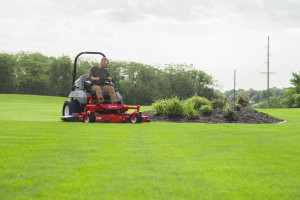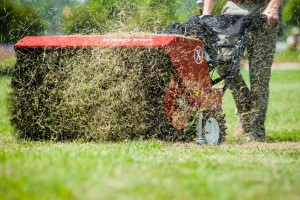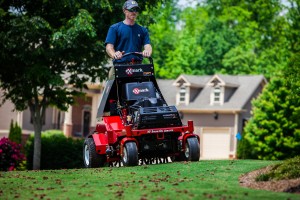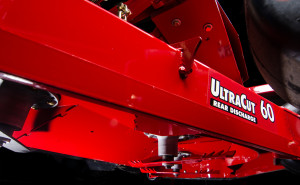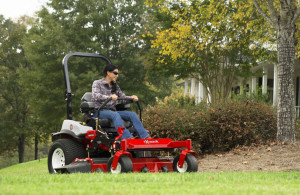
A commercial zero-turn rider not only gets mowing done faster, it delivers aa better quality of cut.
For mowers in the $13-14,000 price range, the productivity gap grows significantly when comparing lawn tractors and zero-turn mowers. Productivity for zero-turn mowers nearly doubles, from 3.87 to 6.68 acres per hour, and increases from 3.14 to 4.11 acres per hour for lawn tractors.
The productivity gap between the ZTR and the lawn tractor is nearly 1.45 acres per hour for 60-inch cutting width machines (the widest deck offered on the X739 lawn tractor used for comparison). When you bump up to a 72-inch cutting deck on the Lazer Z X-Series zero-turn mower, the productivity gap further increases to 2.57 acres per hour!
A homeowner with a 72-inch Lazer Z X-Series ZTR could mow five acres in less than 45 minutes. The lawn tractor example would mow the same area in about one hour and nine minutes, saving the homeowner on the Exmark zero-turn mower nearly half an hour in mowing time.
Maneuverability: Mow More; Trim Less
Raw productivity is one thing, but when you add in landscaping, lawn furniture and kids’ areas, the maneuverability of a mower quickly becomes an important component of real-time productivity. As a result, maneuverability is one big reason more landscape pros choose zero-turn mowers. A ZTR isn’t just able to mow more quickly in a straight line, it can also mow closer to landscaping with greater control thanks to its ability to turn-on-a-dime. You’ll finish mowing quicker and reduce the time spent completing trim work – a true win-win situation.
As you move above $10,000-11,000, lawn tractors begin to offer maneuverability-enhancing features, such as four-wheel steering and/or four-wheel drive. But even with those features, the maneuverability still does not compare to the performance of a true commercial zero-turn mower.
Dig Deeper at Exmark.com:
- Learn more about the advantages of Exmark zero-turn lawn mowers.
- Learn more about how to determine mower productivity.
*Productivity rating in gross acres per hour is based on the published specifications for each product. Actual performance may vary from specified performance based on conditions.
Formula for calculating acres per hour at 80% efficiency: (MPH x width of cut in inches)/124

